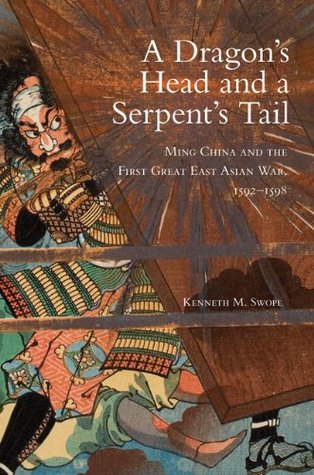A Dragon’s Head and A Serpent’s Tail
 Being something of a fan of warring states Japan (you can largely thank Nobunaga’s Ambition II for that), I’ve been aware for some time that at the end of the era, there was a Japanese invasion of Korea. But not a lot of attention gets paid to it; it’s just a short incident between the death of Nobunaga and the death of Hideyoshi.
Being something of a fan of warring states Japan (you can largely thank Nobunaga’s Ambition II for that), I’ve been aware for some time that at the end of the era, there was a Japanese invasion of Korea. But not a lot of attention gets paid to it; it’s just a short incident between the death of Nobunaga and the death of Hideyoshi.
So Kenneth M. Swope’s book on the entire war with Korea is very interesting, and pretty much all-new to me. Even more so, as Swope is primarily a specialist in Ming China, and this book is centered on China’s role in the war. Korea pretty much collapsed at the beginning of the war, and Ming China sent all sorts of aid to retrieve the situation.
Swope calls this the ‘First Great East Asian War’, because China was also dealing with other border problems at, or nearly so, the same time, and at the beginning of the book, he places the Korean problem in context with the rest of the ‘Three Great Campaigns’, which are something of a high water mark for the late Ming Dynasty. In fact, this period is generally seen as something of a disaster for the Ming, and Emperor Wanli one of the worst China had. Swope argues that this is not so, and that China weathered these crises well, and in good shape. Wanli is shown as being able to override court factionalism and appoint competent administrators and commanders, and stick by them when they are criticized. He was not, however, able to stop such infighting, which seems to be part of why he thinks the Ming collapsed only a couple decades later (he has a book about this out, currently on sale for $120. No.)
This is primarily a military history, but also includes accounts of the diplomatic talks between China and Japan, and the fate of Korean civilians, and court politics. This is a fairly high-level overview, and a very good one, but there’s a lot more details I’d like to read about in the future.

Discussion ¬